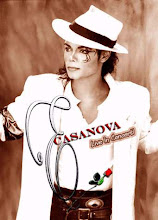Safeguarding of sources
The Allies were seriously concerned with the prospect of the Axis command finding out that they had broken into the Enigma traffic. The British were, it is said,[who?] more disciplined about such measures than the Americans, and this difference was a source of friction between them. It was a little bit of a joke that in Dehli, the British Ultra unit was based in a large wooden hut in the grounds of Government House. Security consisted of a wooden table flap across the door with a bell on it and a sergeant sat there. This hut was ignored by all. The American's unit was in a large brick building, surrounded by barbed wire and armed patrols. People may not have known what was in there, but they surely knew it was something important and secret.
Ultra information was used to attack and sink many Afrika Korps supply ships bound for North Africa; but, as in the North Atlantic, every time such information was used, an "innocent" explanation had to be provided: often scout planes were sent on otherwise unnecessary missions, to ensure they were spotted by the Germans.
In one particular case, the Germans became suspicious of Ultra when five ships from Naples headed for North Africa with essential supplies for Rommel's campaign were all mysteriously attacked and sunk by an Allied airforce. As there was no time to have the ships all spotted by the airforce beforehand and then sunk accordingly, the decision went directly to Churchill whether or not to act solely on Ultra intelligence. Churchill approved the attack, but afterwards a message was sent by the Allies to Naples congratulating a fictitious spy and informing him of his bonus. According to some sources the Germans decrypted this message and believed it.[15]
In the Battle of Atlantic the precautions were taken to the extreme. In most cases where the Allies knew from intercepts the locations of U-boats in mid-Atlantic, the U-boats were not hunted immediately, until a "cover story" could be arranged. For example a search plane might be "fortunate enough" to sight the U-boat, thus explaining the Allied attack.
Some Germans had suspicions that all was not right with Enigma. Karl Dönitz received reports of "impossible" encounters between U-boats and enemy vessels which made him suspect some compromise of his communications. In one instance, three U-boats met at a tiny island in the Caribbean, and a British destroyer promptly showed up. They all escaped and reported what had happened. Dönitz immediately asked for a review of Enigma's security. The analysis suggested that the signals problem, if there was one, was not due to the Enigma itself. Dönitz had the settings book changed anyway, blacking out Bletchley Park for a period. However, the evidence was never enough to truly convince him that Naval Enigma was being read by the Allies. The more so, since his counterintelligence B-Dienst group, who had partially broken Royal Navy traffic (including its convoy codes early in the war),[16] supplied enough information to support the idea that the Allies were unable to read Naval Enigma. [17]
Of course, in other cases Ultra intelligence could be taken advantage of with little or no risk of a compromise. One example was the military deception preparations for the D-day landings. These involved use of dummy tanks, fake ships and notional armies to fool the Germans into thinking that the Allied invasion would take place at the Pas de Calais, as opposed to Normandy. Ultra intelligence confirmed to the Allies that these deceptions were working, giving all decision makers involved greater confidence of a successful invasion.
By 1945 almost all German Enigma traffic (Wehrmacht, Kriegsmarine, Luftwaffe, Abwehr, SD, etc.) could be decrypted within a day or two, yet the Germans remained confident of its security. Had they been better informed, they could have changed systems, forcing Allied cryptanalysts to start over.
Monday, April 6, 2009
Subscribe to:
Post Comments (Atom)

No comments:
Post a Comment